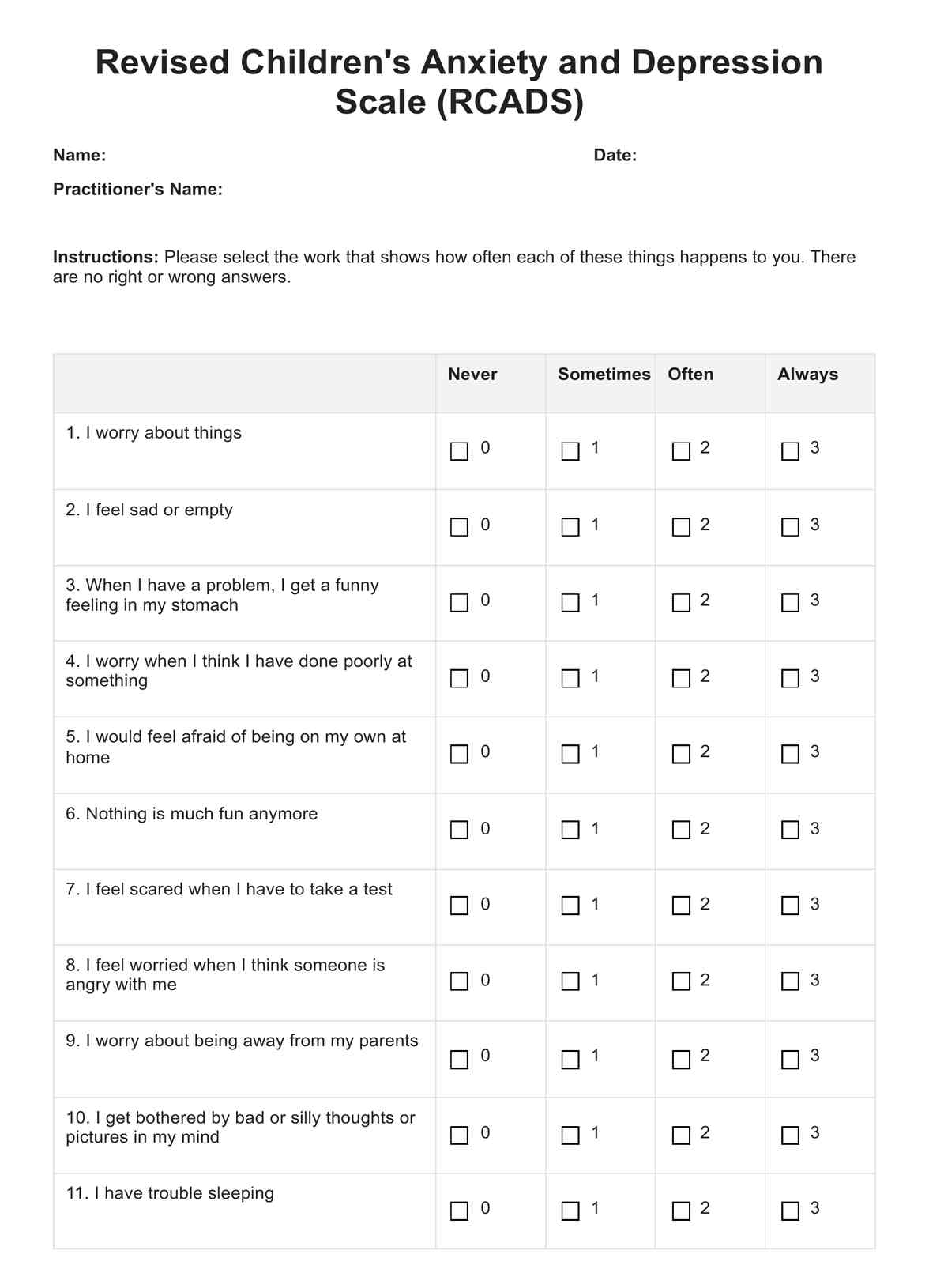The Revised Children’s Anxiety and Depression Scale (RCADS), specifically the longer child-version, should take 10-15 to accomplish.

Revised Children's Anxiety and Depression Scale (RCADS)
Assess symptoms of anxiety disorders and depression with the Revised Children’s Anxiety and Depression Scale (RCADS). Download the template here.
Revised Children's Anxiety and Depression Scale (RCADS) Template
Commonly asked questions
Interpretation involves a T-scale considering the child’s grade and gender. For instructions on scoring and interpreting, please refer to the paragraph in the first section.
Practitioners who recognize, diagnose, and/or treat depression and anxiety in children, such as general practitioners, child pediatricians, child psychiatrists, child psychologists, and counselors, can use the Revised Children’s Anxiety and Depression Scale (RCADS).
EHR and practice management software
Get started for free
*No credit card required
Free
$0/usd
Unlimited clients
Telehealth
1GB of storage
Client portal text
Automated billing and online payments











